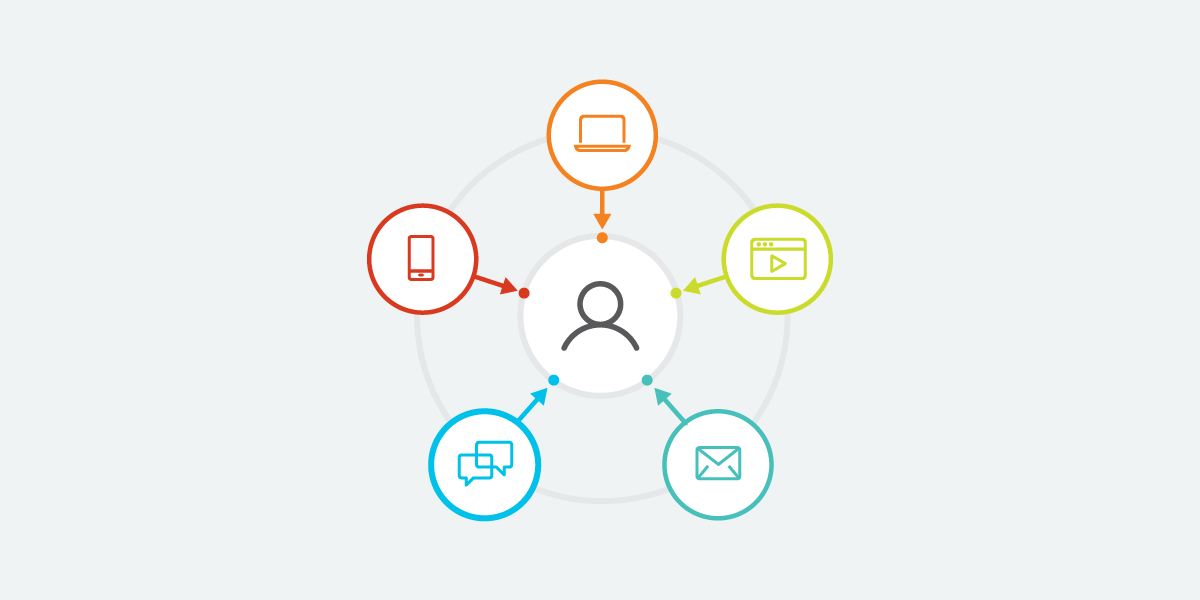Blog
Using Strategic Integrated Communication to Drive Growth
|

Blog
Using Strategic Integrated Communication to Drive Growth|

Changing demographics and the COVID-19 pandemic are altering how people communicate with each other, their employers and businesses. More people are making purchases online and working virtually. People are adapting to the new digital environment, and the world will likely never look quite like it did before the pandemic.
This increase in digital interactions and communication channels makes it more challenging for brands to show up with consistency internally and externally. An integrated communication strategy serves as the connective, cohesive tissue between all messages spanning the digital content ecosystem and traditional offline interactions. The strategy takes into consideration who the target audiences are and where to best communicate with them to drive business growth.
Integrated communication also connects internal teams and the channels they manage with a strategic thread. It builds bridges through channels and content to ensure everything is working together in concert toward business objectives. Different teams may create the various parts of a multichannel communication campaign (e.g., digital ads, press releases, social media copy, email copy, internal communication), but integrated communication keeps them aligned and consistent, so no single tactic feels disjointed from the other.
How integrated communication creates connections that support growth
Business growth happens when organizations build meaningful connections with their prioritized audiences. Integrated communication enables the relevant dialogue and consistent experience needed to establish authentic relationships and drive desirable actions that help the business grow. Here’s how integrated communication can establish these connections and support growth with key audiences.
Customers (current and prospective)
Customers and prospects can more easily find, engage and form authentic connections with businesses when the right content is available when and where they need it. Integrated communication ensures that organizations show up on the right channels with a cohesive message aligned to business objectives. This cohesiveness supports a consistent and positive cross-channel experience that impacts customer loyalty and brand reputation and credibility.
Customer experience has direct connections to business metrics. A recent study found that it will overtake both price and product as the most important brand differentiator. Customer experience also increases customer satisfaction, retention and revenue — with customers willing to pay premiums for better experiences.
Partners
Integrated communication also helps organizations form valuable partnerships. It’s a mechanism for businesses to bring their purpose, mission and values to life across channels. Activating these strategic business elements with integrated communication attracts partners that drive growth and align to what the organization is trying to achieve. This values alignment creates deeper connections that elevate initiatives like sustainability and diversity, equity and inclusion platforms and joint ventures.
For example, a fast-casual restaurant chain relies on attracting franchisees to establish new business locations. Sustainability is one of the restaurant’s core values, and it communicates this through various channels and demonstrates it by committing itself to switch to sustainably sourced products. Integrating the sustainability message through all partner communications and interactions can help the restaurant attract loyal and committed franchisees who believe in the restaurant’s purpose, mission and values — and want to play a role in making it a success.
Employees
Integrated communication is vital to create a culture of transparency and trust. How well and how consistently an organization communicates across channels — both directly to employees and the marketplace — can impact how employees perceive their employer and how engaged they are in their work. Workplaces with engaged employees are often more productive and profitable and see increases in retention, revenue and customer engagement.
It’s important to remember that employees also see the messages the business communicates to its external audiences. With integrated communication, no message an employee sees on social media or in the news media should come as a surprise because they should receive similar messages internally. Organizations that weave a strategic thread through all messages, regardless of whether they’re internal or external, will have more trusting, loyal and committed employees.
Communities
Organizations engage their communities best when they stay focused on what matters most. Integrated communication enables this focus by keeping community outreach initiatives tied tightly to purpose, mission and values. It helps the business show up in the community with a clear and consistent message regardless of whether it delivers the message at an event, on social media, through the news media or in a flyer.
This consistency establishes deeper community connections because people trust the organization as a reliable force for good in their neighborhoods. These connections foster community and employee loyalty and pride and impact the brand’s reputation.
Get started with integrated communication
The first step to implementing an integrated communication strategy is understanding your audiences and then determining how to communicate strategically to engage them. Beehive helps clients assess how the marketplace and industry changes affect them, determine how their digital content ecosystem needs to change and take actionable steps to get their ecosystem working to drive business growth.


